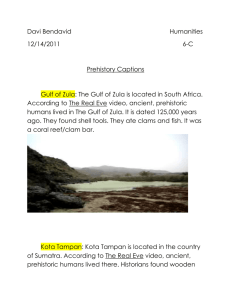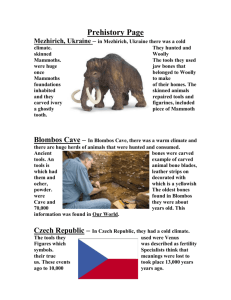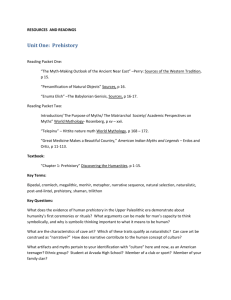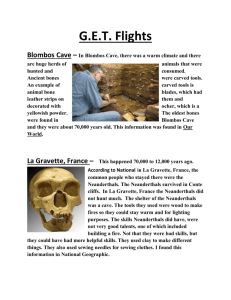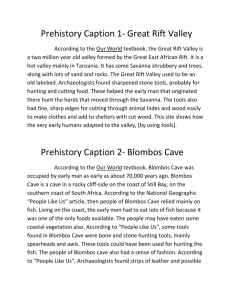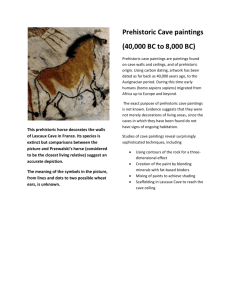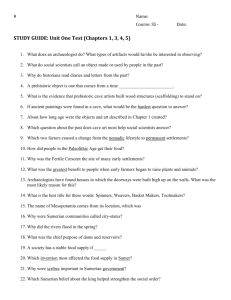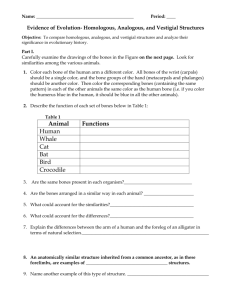all captions for mikaila and katheerine
advertisement
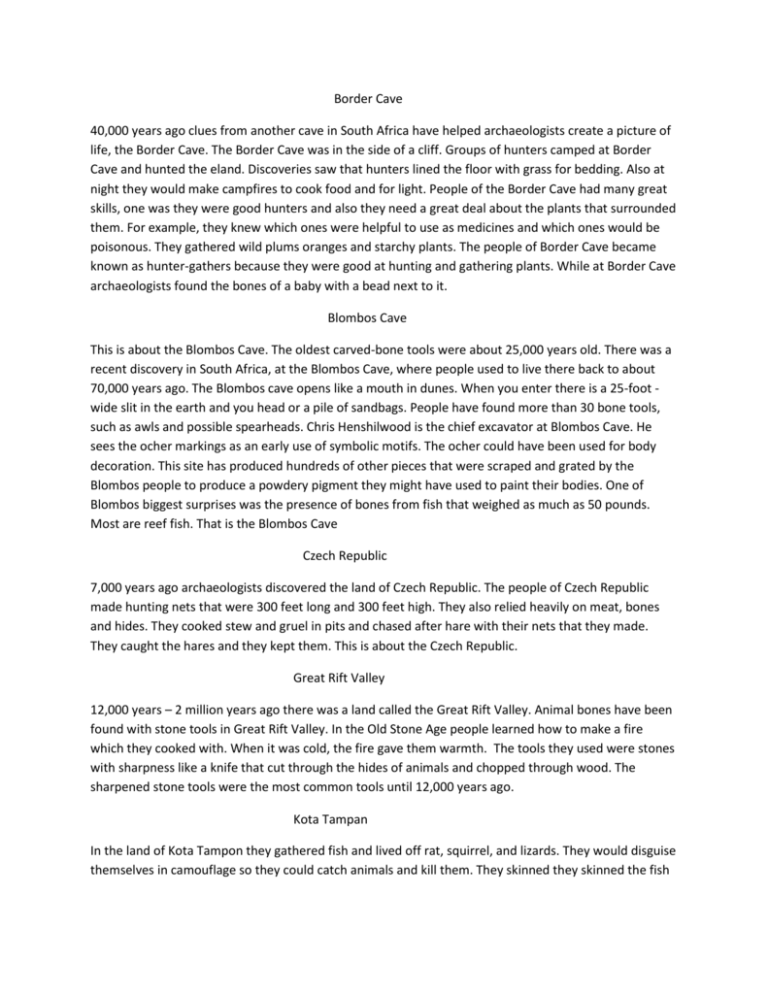
Border Cave 40,000 years ago clues from another cave in South Africa have helped archaeologists create a picture of life, the Border Cave. The Border Cave was in the side of a cliff. Groups of hunters camped at Border Cave and hunted the eland. Discoveries saw that hunters lined the floor with grass for bedding. Also at night they would make campfires to cook food and for light. People of the Border Cave had many great skills, one was they were good hunters and also they need a great deal about the plants that surrounded them. For example, they knew which ones were helpful to use as medicines and which ones would be poisonous. They gathered wild plums oranges and starchy plants. The people of Border Cave became known as hunter-gathers because they were good at hunting and gathering plants. While at Border Cave archaeologists found the bones of a baby with a bead next to it. Blombos Cave This is about the Blombos Cave. The oldest carved-bone tools were about 25,000 years old. There was a recent discovery in South Africa, at the Blombos Cave, where people used to live there back to about 70,000 years ago. The Blombos cave opens like a mouth in dunes. When you enter there is a 25-foot wide slit in the earth and you head or a pile of sandbags. People have found more than 30 bone tools, such as awls and possible spearheads. Chris Henshilwood is the chief excavator at Blombos Cave. He sees the ocher markings as an early use of symbolic motifs. The ocher could have been used for body decoration. This site has produced hundreds of other pieces that were scraped and grated by the Blombos people to produce a powdery pigment they might have used to paint their bodies. One of Blombos biggest surprises was the presence of bones from fish that weighed as much as 50 pounds. Most are reef fish. That is the Blombos Cave Czech Republic 7,000 years ago archaeologists discovered the land of Czech Republic. The people of Czech Republic made hunting nets that were 300 feet long and 300 feet high. They also relied heavily on meat, bones and hides. They cooked stew and gruel in pits and chased after hare with their nets that they made. They caught the hares and they kept them. This is about the Czech Republic. Great Rift Valley 12,000 years – 2 million years ago there was a land called the Great Rift Valley. Animal bones have been found with stone tools in Great Rift Valley. In the Old Stone Age people learned how to make a fire which they cooked with. When it was cold, the fire gave them warmth. The tools they used were stones with sharpness like a knife that cut through the hides of animals and chopped through wood. The sharpened stone tools were the most common tools until 12,000 years ago. Kota Tampan In the land of Kota Tampon they gathered fish and lived off rat, squirrel, and lizards. They would disguise themselves in camouflage so they could catch animals and kill them. They skinned they skinned the fish and chopped there bones. They a skull of a 12 year old boy, and used stone tools called hammer stones to do work. This is what Kota Tampan. Mezhirich, Ukraine There is a village called Mezhirich of Ukraine. There is a complex of four huts built about 51,000 years ago from mammoth bones and tusks. The foundation alone contains the mandibles of more than a hundred mammoths. A series of pits dug into the permafrost near the huts may have served as freezers where meat could be stored. Ice Age societies elsewhere in Europe were also growing more complex. Families built a cold-weather refuge out of woodly mammoth remains. La Gravette This is about the Gravettian. Age people had also developed elaborate funeral practices. The children apparently were at the same time, about 3,000 ivory beads that were attached to the clothing in which they were buried surrounded each one. Surrounding the children are animal figurines and carved disks that may imply a sun-moon cut. The burial suggests that social hierarchies had begun to emerge in come Ice Age societies. Nearby excavators also found skeletons of a man and women from roughly the same period. Gulf of Zula This is about the Gulf of Zula. As Africa tried up so did the drinking water. Hunter-gatherers were forced to become fishermen and beach congress. They ate fish, scallops, oysters, and clams. Stone tools embedded in a fossil coral reef. The world’s first oyster bar was about 61/2 kilometers long and 50 meters above the current sea level. There is an offcedian tool that had been used to smash some of the oysters.
